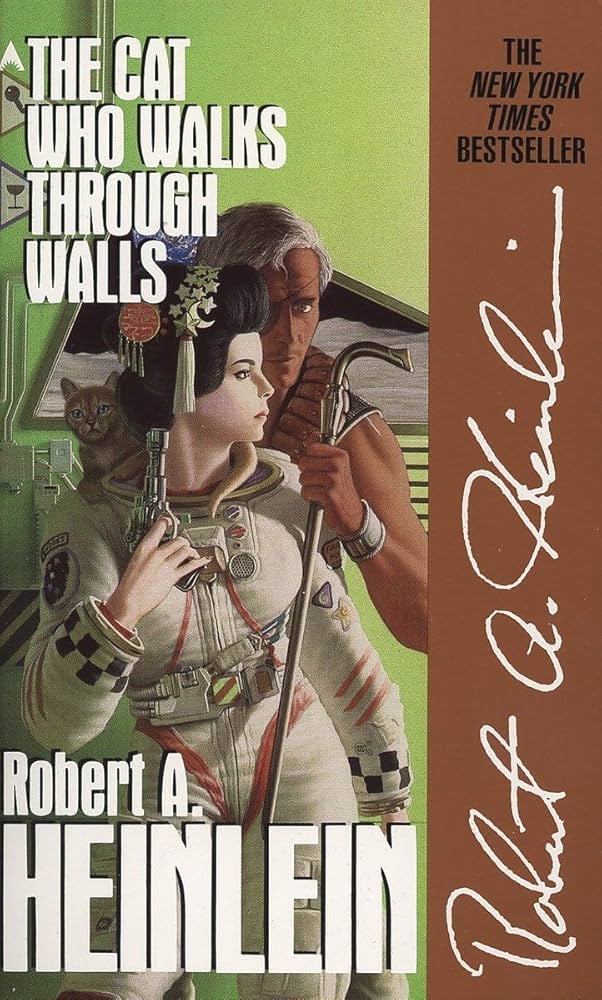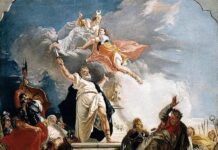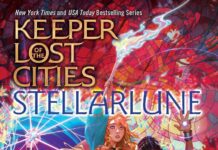In the realm of speculative fiction, few authors have wielded the power of inventiveness quite like Robert A. Heinlein. “The Cat Who Walks Through Walls” stands as a curious chapter within his illustrious oeuvre-both a continuation and a departure,weaving intricate threads of mystery,philosophy,and adventure. This review aims to unlock the many doors that Heinlein presents, inviting readers to step inside and explore the layered narrative, its enigmatic characters, and the themes that challenge the boundaries between reality and possibility. Whether you approach the novel as a devoted fan or a newcomer to Heinlein’s universe, this thoughtful examination seeks to illuminate the paths that lead through this complex and multifaceted work.
Unlocking the Layers of Heinlein’s Narrative Complexity and How It Challenges Traditional science Fiction Boundaries
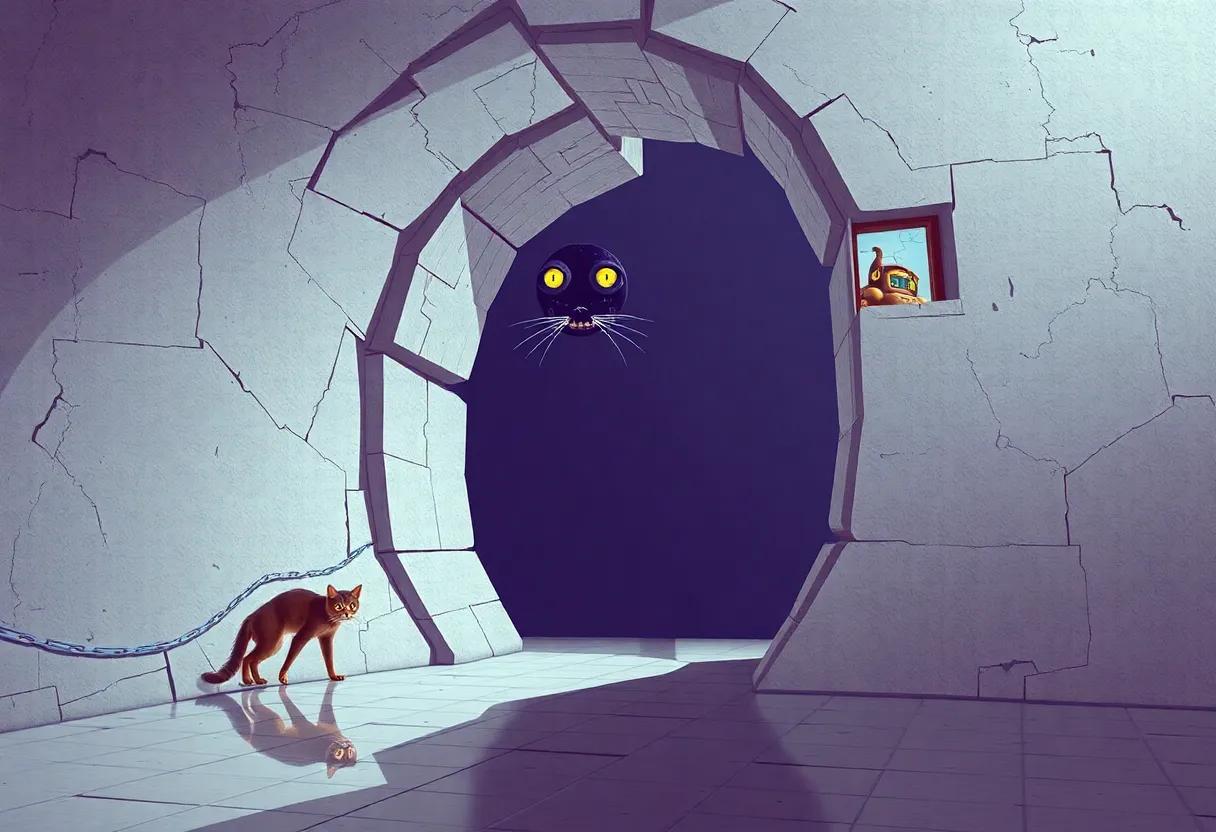
Robert A.Heinlein’s narrative architecture in The Cat Who Walks Through Walls defies conventional storytelling, weaving together multiple timelines, meta-fictional nods, and recurring characters from his extensive oeuvre. His approach not only invites readers to engage with the text on a surface level but also beckons them to unravel hidden connections and thematic echoes across his literary universe. The fluidity between past and present, fact and fiction, pushes the boundaries of traditional science fiction by blurring the lines of genre constraints and narrative linearity.
This layered complexity transforms the novel into an intricate puzzle, where characters serve as both archetypes and agents of narrative disruption. Heinlein’s deft use of paradoxes and self-referential techniques challenges readers to consider broader philosophical questions about identity, reality, and freedom. Below is a brief overview of key elements that make this work a unique cornerstone in sci-fi literature:
- Interconnected Universes: Characters appear across different Heinlein novels, creating a multidimensional literary web.
- Meta-Narrative elements: The story openly references its own fictionality, inviting self-aware reading.
- Temporal Fluidity: Non-linear timeline structure that mirrors the complexities of human perception.
- Philosophical Depth: Themes of autonomy, destiny, and the nature of existence underpin the plot’s progression.
Exploring the Intriguing blend of Mystery, Adventure, and Philosophical Questions in the Storytelling
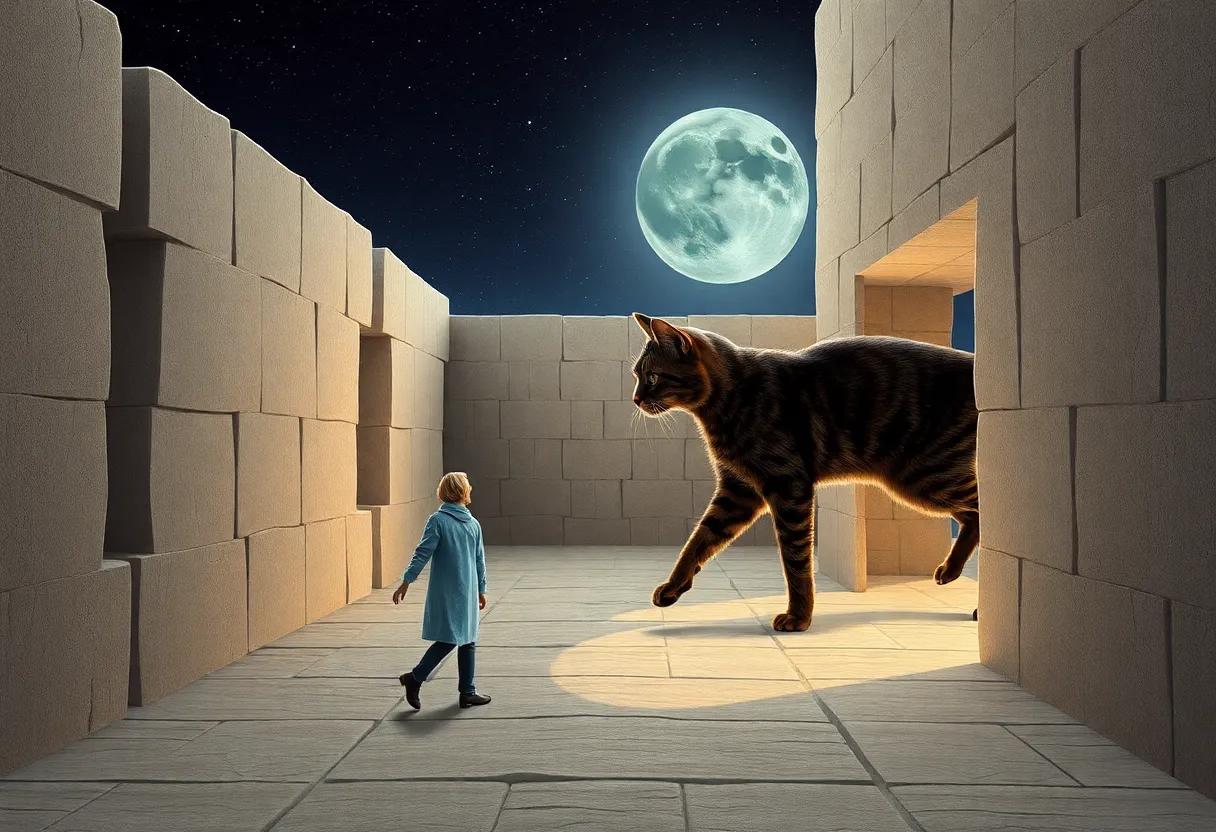
Heinlein masterfully weaves a tapestry where enigmatic mysteries coexist with relentless adventure, inviting readers to traverse through a world as unpredictable as it is captivating. The narrative does not merely propel forward with thrilling escapades; it is indeed punctuated by moments that challenge one’s perception of reality and existence. Characters step through literal and metaphorical doors,symbolizing the elusive nature of truth and the limits of human understanding. This fusion of suspense and philosophical inquiry creates a layered experience,making each revelation feel both exhilarating and thought-provoking.
embedded within the action-packed plot are profound questions that resonate beyond the page, prompting reflection on identity, freedom, and morality. The story encourages readers to consider:
- What defines individuality when boundaries are crossed?
- How do choices shape the fabric of one’s reality?
- In what ways do adventure and curiosity fuel human growth?
| Element | Role in Story | Philosophical Implication |
|---|---|---|
| Doors | Portal to new worlds | Thresholds of perception and existence |
| Adventure | Driving force of plot | the quest for meaning and experience |
| Mystery | Encourages curiosity | Uncertainty as a catalyst for revelation |
A Deep Dive into Character Development and the Emotional Journey of the Protagonists Throughout the Novel

Heinlein’s protagonists traverse more than just physical boundaries – they navigate intricate emotional landscapes that reveal their deepest motivations and vulnerabilities.The central characters are masterfully crafted with layers of complexity, each evolving in response to the unpredictable universe Heinlein builds around them. From moments of quiet introspection to bursts of daring action, their emotional trajectories pulse with authenticity, inviting readers to empathize and reflect.This nuanced development transcends typical sci-fi archetypes, rendering the characters not only believable but profoundly human.
Key traits and emotional shifts can be summarized as follows:
- Resilience: Facing existential threats while maintaining hope and purpose.
- Conflict: Internal struggles that mirror the external chaos enveloping them.
- Growth: Transformative moments that redefine identity and allegiance.
| Protagonist | Defining Emotional Trait | Turning Point |
|---|---|---|
| Richard Ames | Cynical loyalty | Choosing to protect the unlikely allies |
| Gwen Novak | Inner strength | Confronting her past to embrace a new destiny |
| Pixel | Curiosity and innocence | discovering hidden motives of friends and foes |
Analyzing Heinlein’s Use of Time Travel and Parallel Realities as Tools for Thematic Expression
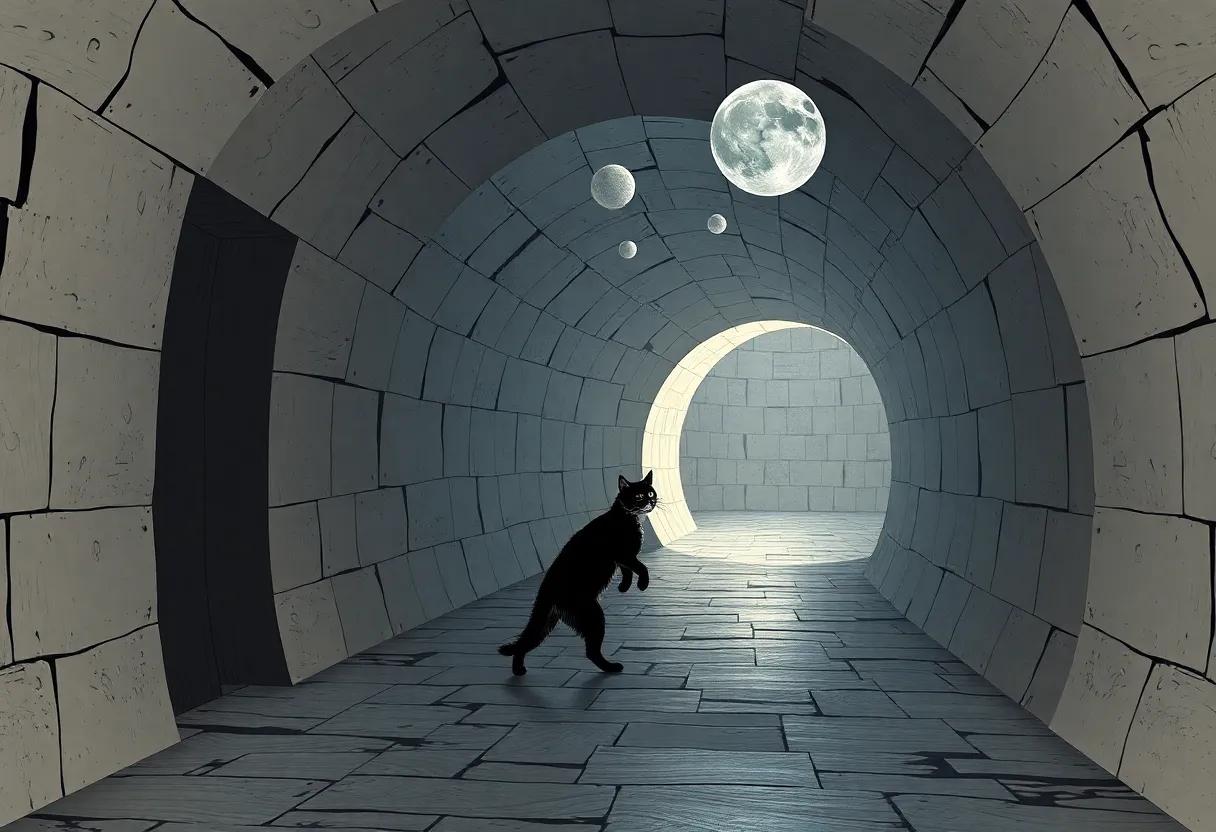
Heinlein masterfully manipulates the fabric of time and the boundaries of parallel realities to not only weave a complex narrative but to deepen the philosophical undercurrents of his work.Through non-linear timelines and alternate universes,he challenges readers to consider the fluidity of identity and destiny. The ability of characters to traverse between dimensions serves as a metaphor for exploring the multiplicity of choices and consequences inherent in the human condition.This interplay invites reflection on how different paths shape one’s sense of self, underscoring the novel’s exploration of freedom and predestination.
Key thematic tools Heinlein employs include:
- Time loops that emphasize the cyclical nature of history and memory.
- Parallel universes used to question the reality of experience and the validity of perception.
- Character duality, illustrating internal conflicts projected onto external realities.
By intertwining these elements,Heinlein creates a rich tapestry where speculative science fiction acts as a lens to scrutinize philosophical questions. The narrative’s shifting realities form a matrix through which he examines themes of autonomy, trust, and the search for meaning amidst chaos. The following table highlights how specific time travel and parallel reality motifs correlate with the novel’s core themes:
| Motif | Thematic Expression | Impact on Narrative |
|---|---|---|
| Time Loops | Repetition & Fate | Reinforces inevitability of certain events |
| Multiverse Travel | Choice & Result | Expands character possibilities |
| Parallel Selves | Identity & Self-awareness | Highlights internal conflict externally |
The Role of Loyalty and trust in The Cat Who Walks Through Walls and Its Impact on Reader Engagement
Loyalty and trust are not merely thematic elements but serve as the emotional backbone of Heinlein’s intricate narrative tapestry.The characters’ unwavering allegiance to each other, despite complex motives and cosmic uncertainty, invites readers into a world where bonds forge pathways through dimensions-both literal and figurative. This dynamic compels readers to invest emotionally, transforming passive consumption into active engagement. Heinlein masterfully explores how trust becomes a currency in a universe teetering on chaos, encouraging readers to question their own thresholds for belief and commitment.
The interplay of loyalty and trust also enhances reader immersion by creating tension and release within the story’s structure. Consider the following breakdown of their impact on key narrative functions:
| Aspect | Impact |
|---|---|
| Character Motivation | Drives decisions that propel plot twists |
| Emotional Resonance | Deepens reader empathy and connection |
| Suspense | Maintains intrigue around true intentions |
In this way,loyalty and trust do more than shape relationships; they act as narrative levers that lift readers into a participatory experience,making Heinlein’s work a compelling study of human connection amidst uncertainty.
Examining the Science and Technology Concepts Interwoven with Human Experience in the Plot

Heinlein masterfully intertwines cutting-edge scientific theories and speculative technology with the human element, crafting a narrative that feels both expansive and intimate. The novel leverages concepts such as quantum tunneling and multiverse theory, not merely as plot devices but as metaphors that reflect the complexity of human choices and the fluidity of identity. Technology here is not cold or alien; rather, it is indeed deeply enmeshed in the characters’ emotions and motivations, reminding readers that the future of science is ultimately shaped by the human condition.
One of the intriguing aspects is how the story explores the intersection between advanced inventions and everyday experience through an array of ingenious devices and phenomena. Consider this concise comparison of key technologies and their narrative roles:
| Technology | Function in Plot | Human element |
|---|---|---|
| World-Walking Doors | Enable interdimensional travel | Freedom and consequences of choice |
| Sentient AI Companions | Assist in navigation and survival | trust and companionship |
| Quantum Communication | Instant information exchange | Connection despite distance and time |
| Neural Interface Devices | Enhance mental capacities | Exploration of self-awareness |
Each technological breakthrough is carefully paired with emotional or philosophical weight, inviting readers to ponder how innovations might alter not only society but also our very understanding of existence. Heinlein’s narrative challenges the binary between man and machine, suggesting instead an intricate dance where science advances hand-in-hand with the evolving tapestry of human experience.
Balancing Action and Contemplation The Novel’s Pacing and Its Effectiveness in Maintaining reader Interest
Heinlein masterfully navigates the fine line between high-octane sequences and reflective moments, creating a cadence that never feels rushed or stagnant. The novel’s rhythm pulses with bursts of action-thrilling escapes,gunfights,and scientific breakthroughs-juxtaposed with quieter scenes that invite introspection and philosophical musings. This balance ensures that readers are never overwhelmed by constant adrenaline, nor left adrift in excessive contemplation, sustaining curiosity throughout the narrative.
Key techniques contributing to this dynamic pacing include:
- Strategic scene transitions that alternate tension with relief
- Character-driven dialogues that deepen emotional stakes without slowing momentum
- Interwoven subplots that keep multiple threads active, preventing monotony
| Pacing Element | Effectiveness |
|---|---|
| Action Sequences | High – Sustains excitement |
| Philosophical Passages | Moderate – Encourages reflection |
| Character Interactions | High - Builds empathy |
| Plot Twists | High – Maintains unpredictability |
Ultimately, the interplay between action and contemplation is not just a pacing strategy but an essential storytelling mechanism.Heinlein’s deft modulation of tempo amplifies suspense while providing readers with meaningful pauses to digest the complex ideas threaded throughout the plot. This thoughtful structure enhances engagement, making it easier for readers to invest emotionally without feeling fatigued or detached from the unfolding mystery.
How Heinlein’s commentary on Society and Individualism Resonates in Today’s Literary and Cultural Contexts
Robert A. Heinlein’s exploration of individualism creates ripples that extend far beyond the pages of The Cat Who Walks Through Walls. His characters defy societal norms, embracing personal freedom in ways that challenge readers to reconsider the balance between collective responsibility and personal autonomy. In today’s cultural landscape, where identity and self-expression are fiercely debated, Heinlein’s work acts as a mirror, reflecting ongoing tensions between conformity and rebellion. The tension between societal expectations and individual desires is not only a literary device but also a poignant commentary, reminding us that the struggle for authenticity remains as relevant now as it was in Heinlein’s era.
Additionally, Heinlein’s vision of society-one where technological advancement intersects with personal liberty-fuels ongoing discussions about the role of innovation and ethics today. his nuanced stance encourages a critical look at how systems of control can both empower and restrict, urging readers to question authority without dismissing the necessity of social order. Consider the following facets that make his commentary resonate so deeply:
- Fluid identities: Characters who navigate multiple roles and realities challenge the rigidity of societal labels.
- Questioning authority: A recurring theme that encourages skepticism without nihilism.
- Integration of technology: Depiction of futuristic tools as extensions of human freedom rather than simple control mechanisms.
- Community versus solitude: Constant interplay between the comforts and constraints of belonging.
| Aspect | Heinlein’s Perspective | Contemporary Relevance |
|---|---|---|
| Individual Freedom | Central to character development | Debates on personal rights vs. societal norms |
| Technology | Tool for liberation and exploration | Ethical questions in AI and privacy |
| Authority | Critiqued but sometimes necessary | Discussions on government surveillance |
| Identity | Flexible and multi-dimensional | gender fluidity and self-expression debates |
The Symbolism Behind The Cat and Its Recurring Presence as a Metaphor in the Story
The cat in Heinlein’s narrative transcends the ordinary role of a pet, morphing into a powerful symbol of freedom, curiosity, and the enigmatic boundaries between realities.Its ability to “walk through walls” is much more than a mere physical feat; it serves as a metaphor for breaking constraints – whether they be societal, temporal, or personal. throughout the story, the cat consistently appears during moments when characters confront limitations or make pivotal choices, subtly nudging both them and the reader to question the impermeability of the walls that surround us.This recurring motif underlines a central theme of the novel: the blurred lines between dimensions and the unexpected possibilities that await when those lines are crossed.
Moreover, the feline’s presence encapsulates a duality: it is, simultaneously, a guardian and an enigma. It beckons the characters deeper into the labyrinth of the plot, offering guidance without explicit answers. This nuanced role is reflected in the following traits that the cat embodies within the story:
- independence: Operating beyond human control or understanding.
- Mystery: An ever-present but never fully explained force.
- Transition: Acting as a bridge between different states of being or consciousness.
- Insight: Encouraging characters to see beyond the obvious.
| symbolism Aspect | Associated Meaning |
|---|---|
| Walking Through Walls | Transcendence and freedom |
| Silent Observation | Hidden knowledge and wisdom |
| Elusive Presence | The mystery of existence |
Recommendations for Readers New to Heinlein and Those Familiar with His Works Seeking a Fresh Perspective
For newcomers to Heinlein’s universe, embarking on the journey with The cat Who Walks Through Walls can be both thrilling and challenging. to ease the entry, consider starting with some of Heinlein’s more accessible classics like Starship Troopers or Stranger in a Strange Land. These works lay a strong foundation for his thematic style-melding sharp wit, social commentary, and speculative science-while gradually introducing the complex world-building that defines his later novels. Additionally,exploring short story collections such as The Past Through Tomorrow can provide snapshots of Heinlein’s evolving ideas without overwhelming the reader.
For those already well-versed in Heinlein’s bibliography, approaching this novel as a point of fresh perspective means embracing its meta-narrative and intertextual playfulness. Try creating a simple cross-reference chart to track returning characters and parallel plotlines, which ofen serve as a nod to longtime fans while inviting deeper analysis. Investigate how Heinlein’s themes of identity, reality, and freedom are refracted through this work’s unique structure-sometimes fragmented, frequently enough nonlinear, but always provocative. Immersing oneself in the surrounding fan discussions or critical essays can also unearth rich interpretations, breathing new life into familiar territory.
| Reader Type | Recommended Starting Points | Fresh Perspective Tip |
|---|---|---|
| New to Heinlein | starship Troopers, stranger in a Strange Land | Focus on foundational themes |
| Heinlein Fans | The Cat Who Walks Through Walls and cross-referencing characters | Explore meta-narrative and thematic depth |
The Book’s Place within the Larger Heinlein Universe and Its Connections to Other Titles in His Oeuvre
Robert A. Heinlein’s complex literary universe often feels like a sprawling tapestry, and The Cat Who Walks Through Walls stands as a vivid thread that interweaves characters, settings, and themes from his earlier works.This novel doesn’t simply exist in isolation; it acts as a nexus connecting multiple strands of Heinlein’s storytelling. Characters such as Lazarus Long and the enigmatic Hazel Stone make appearances,tying this narrative into the broader Lazarus Long saga and the Future History series. By blending science fiction adventure with metafictional elements, Heinlein invites readers to explore familiar vistas under new light, while pushing the boundaries of his own universe through layered storytelling and clever allusions.
Notably, this book acts as a literary crossroads where timelines and concepts collide and diverge. The fluidity of space and time in the narrative allows for subtle references to earlier titles, enriching the reading experience for longtime fans.Below is a brief overview encapsulating some of the key ties:
| Heinlein Work | Connection | Key Shared Element |
|---|---|---|
| Time Enough for Love | Shared protagonist lazarus Long | Exploration of longevity and human nature |
| The Moon is a Harsh Mistress | Themes of revolution and freedom | Political subtext and libertarian ideals |
| Stranger in a Strange Land | Philosophical musings on humanity | Questions about societal norms and identity |
| The Number of the Beast | Multiverse travel concept | Breaking conventional narrative boundaries |
Visualizing the Futuristic Settings and Environments Described in The Cat Who Walks Through Walls for Creative Interpretation
Heinlein’s narrative invites readers to traverse a kaleidoscopic blend of cosmic frontiers and terrestrial curiosities, painting a canvas where the boundaries of time and space are playfully distorted.From the sprawling, shipboard habitats orbiting far-flung planets to the bustling, neon-lit streets reminiscent of tomorrow’s urban jungles, each environment pulses with its own unique energy. The fusion of high technology and human idiosyncrasy effectively challenges us to reimagine the familiar-offering fertile ground for creative minds to visualize settings where the unusual feels tangible.
Key elements for imagining these settings include:
- trans-dimensional gateways that blur reality’s edges, hinting at infinite possibilities beyond the visible spectrum.
- Mixed milieus where medieval aesthetics coexist with futuristic machinery, creating a compelling anachronistic tapestry.
- Environmental symbiosis between organic life and advanced technology, fostering ecosystems that evolve alongside mechanized enhancements.
| Setting | Creative Aspects | Visual Inspirations |
|---|---|---|
| Space Habitats | Rotational gravity, intertwined ecosystems | Orbital stations, biodomes |
| Urban sprawl | hybrid tech culture, neon glow | Cyberpunk alleys, mixed architecture |
| Temporal Crossroads | Time loops, paradoxical imagery | Fractured timelines, kaleidoscopic horizons |
A Tribute to Robert A Heinlein Master Storyteller and Visionary Who Continues to Inspire Science Fiction writers and Fans
Robert A. Heinlein’s remarkable ability to blend intricate speculation with deeply human themes is vividly on display in The Cat Who walks through Walls. This novel transcends mere storytelling by weaving a complex tapestry of adventure, romance, and philosophical inquiry. Heinlein’s signature technique-melding hard science fiction elements with compelling character arcs-creates a narrative that challenges readers’ perceptions of reality and morality. the way he explores concepts like freedom, identity, and loyalty remains unmatched, serving as a beacon for aspiring writers who seek to push the boundaries of the genre.
At its core, the book is a masterclass in narrative innovation, inviting readers to walk through metaphorical doors into alternate realities alongside its protagonist. Key thematic pillars that resonate throughout include:
- Interpersonal complexity: the nuanced relationships that drive emotional depth.
- Philosophical dilemmas: questions of existence and choice woven seamlessly into the plot.
- Speculative technology: imaginative gadgets and concepts that foretell future scientific breakthroughs.
| Element | Impact | Legacy |
|---|---|---|
| Complex Characters | Emotional resonance | Inspired character-driven sci-fi |
| Philosophical Themes | Engaged critical thinking | Elevated genre expectations |
| Innovative Plots | Suspense and intrigue | Expanded narrative possibilities |
The Cat who Walks Through Walls stands as a layered tapestry-part homage, part experiment-that invites readers to wander through Heinlein’s corridors of imagination. While it may not unlock every secret or satisfy every expectation, it certainly opens doors to reflection on the nature of storytelling and the boundaries of genre.For those willing to follow its idiosyncratic paths, the novel offers a rewarding, if occasionally perplexing, journey through a uniquely Heinleinian universe.

